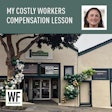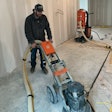

1. How much profit do you make on each of your 10 largest customers? Why is this question so important? Because the profit you make on those big customers determines, in large measure, the profitability of your business.
Consider how often they buy, how large their orders are, and how quickly they pay. Those are the obvious things, but also consider the special price concessions you might give them in appreciation for their business. Do you extend special services to them in delivery, warranty support or other customer service? Do you extend payment terms or wait longer before you call their accounts payable department? Do you process special turnaround orders or accept smaller orders than you really want to?
Each of these extras costs your company money or time-both real costs of servicing that account. This is not to say you shouldn't do it, but you should know how profitable that account is in order to make the best decisions for your company. In the end, your largest customer isn't always your most profitable customer.
Are you giving these concessions because you're building a relationship that you hope will pay off later? If so, think about asking these customers if they will be willing to pay more money tomorrow for something they're paying less for today. Want to guess what their answer would be?
2. How much does each product you sell really cost you? If you lose money on every item you sell, it's hard to make it up on volume. I am amazed at how many companies figure their all-important gross profit on a product by deducting from the selling price only the direct costs.
Unfortunately, this is rarely the true cost of a product you sell-for example, wood flooring. Consider the costs to receive, warehouse and deliver flooring. How about servicing the warranty or the development cost if it's your proprietary product?
And then there's the overhead cost of running your shop or warehouse. The costs related to having the facility ready and manned for operations include the lights, insurance, wages, janitorial service, and maintenance contracts on your equipment, among many other items.
If one of your products requires a disproportionate amount of overhead costs, an average overhead calculation for your company as a whole will never give you the right answer. Your most popular item could be a loss leader without your even knowing it.
3. How quickly does your inventory turn over during a year? Funny things happen to inventory that doesn't move out of your warehouse quickly. It disappears, breaks or becomes old, obsolete or generally unusable. Or it just gets misplaced or lost, only to be found soon after you've bought more. Or the market price comes down and you have to mark it down to sell it. All of these results take money out of your pocket without giving you any benefit in return.
The first step in preventing all these things from hitting your bottom line is knowing how quickly your inventory turns and noting any changes in that rate. Step number two is refining the overall turnover rate to an item-specific turnover rate, at least for high-cost items. Why the detail? Because expensive items that don't move may be hidden by fast-moving commodity items on your floor with much lower margins.
4. How quickly do your receivables get collected? This sounds like a no-brainer to most businesspeople, but ask yourself this: What is the average day's sales in your current accounts receivable balance (often called DSO)? Need to look it up? Too often we believe the concept but don't follow the practice. Collections get out of hand without our realizing it because we're busy selling more and "managing the growth," as they say.
Think of it this way: Decide how much interest-free money you are willing to lend to your customers as a percentage of sales and stick to it. Follow the trend of your DSO and take action when it starts moving in the wrong direction. If strong margin gains are available in return for extending terms, that's OK, but do this deliberately, not accidentally. As a followup, watch your accounts receivable aging trends as well, because old balances look the same as new balances in a DSO calculation-and it's statistically proven that the older those balances, the less likely they are to be collected.
5. When will your cash reach its highest and lowest points of the year? Everyone seems to agree they'd like to know these answers in order to better plan for short-term borrowing needs or explore investment opportunities in advance. And yet few people believe they can get the answer in any way that's reasonably reliable or cost-effective.
Many business owners track cash flow by following net income and the bank balance, neither of which is going to be very useful in predicting future cash needs for most businesses. Capital asset purchases, growth in inventory, receivables and payables, debt service, capacity expansion-these can all have a profound influence on future cash balances. The good news is that they can all be reasonably predictable with a little research.






























